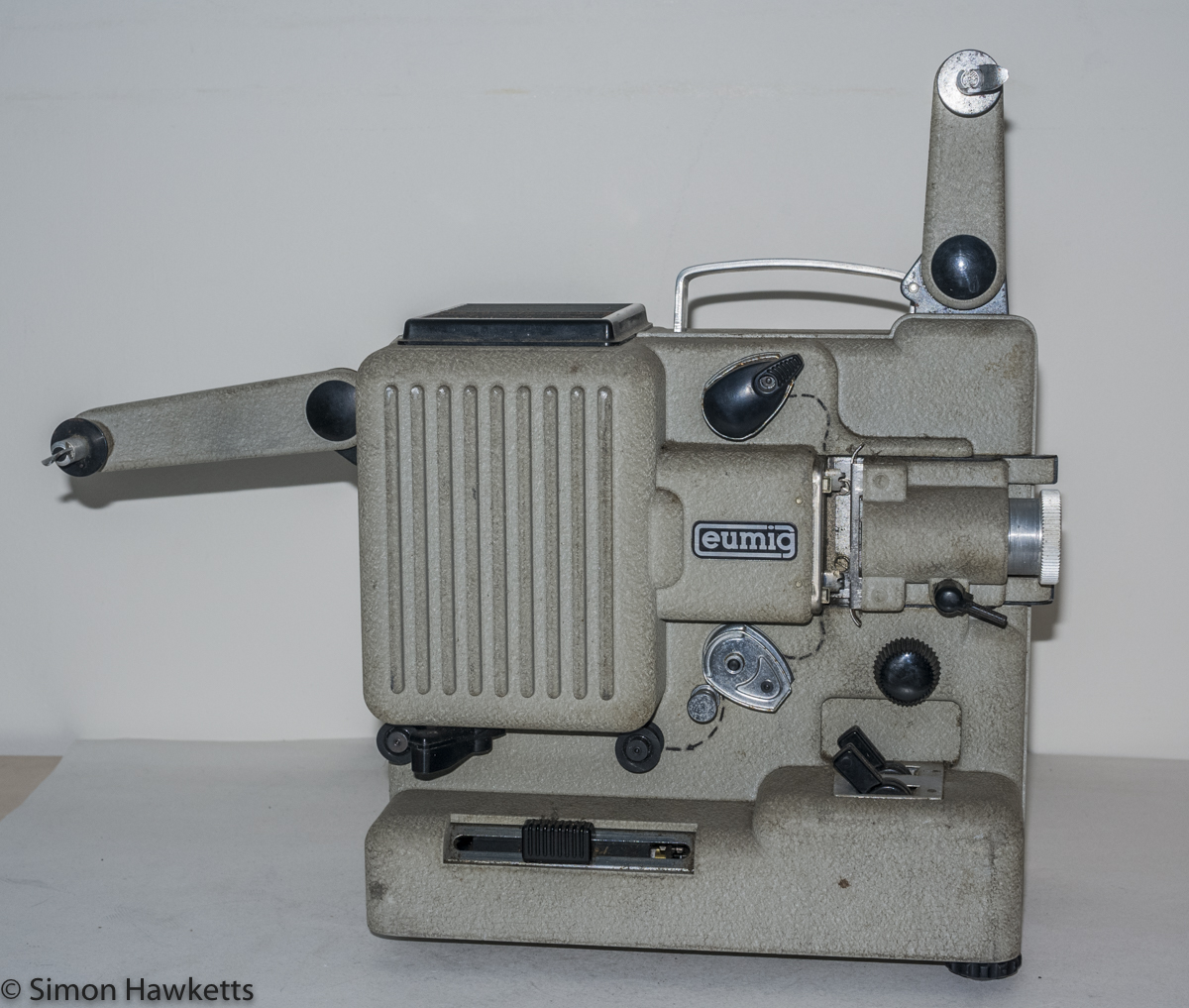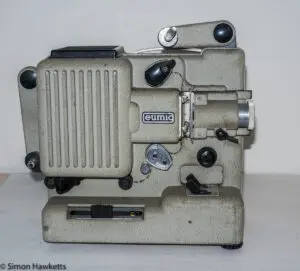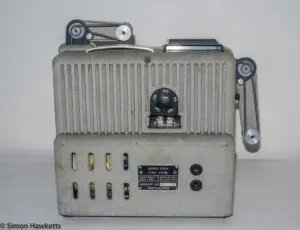Eumig P8m 8 mm silent projector
The Eumig company produced many high quality, reliable cine projectors but probably their most famous model was the classic P8 unit. The model featured in this article, the Eumig P8m, was an upgrade to the original unit, and was probably made in the mid to late 1950s.
Eumig P8m Images
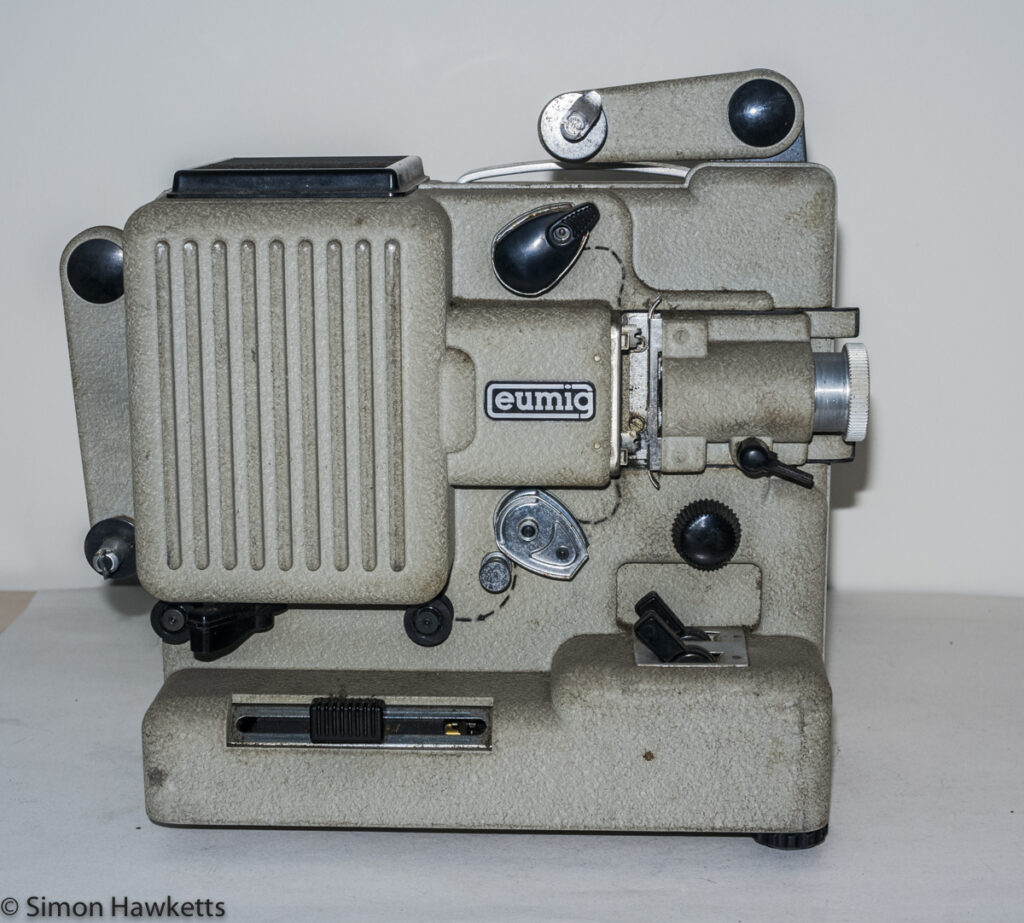
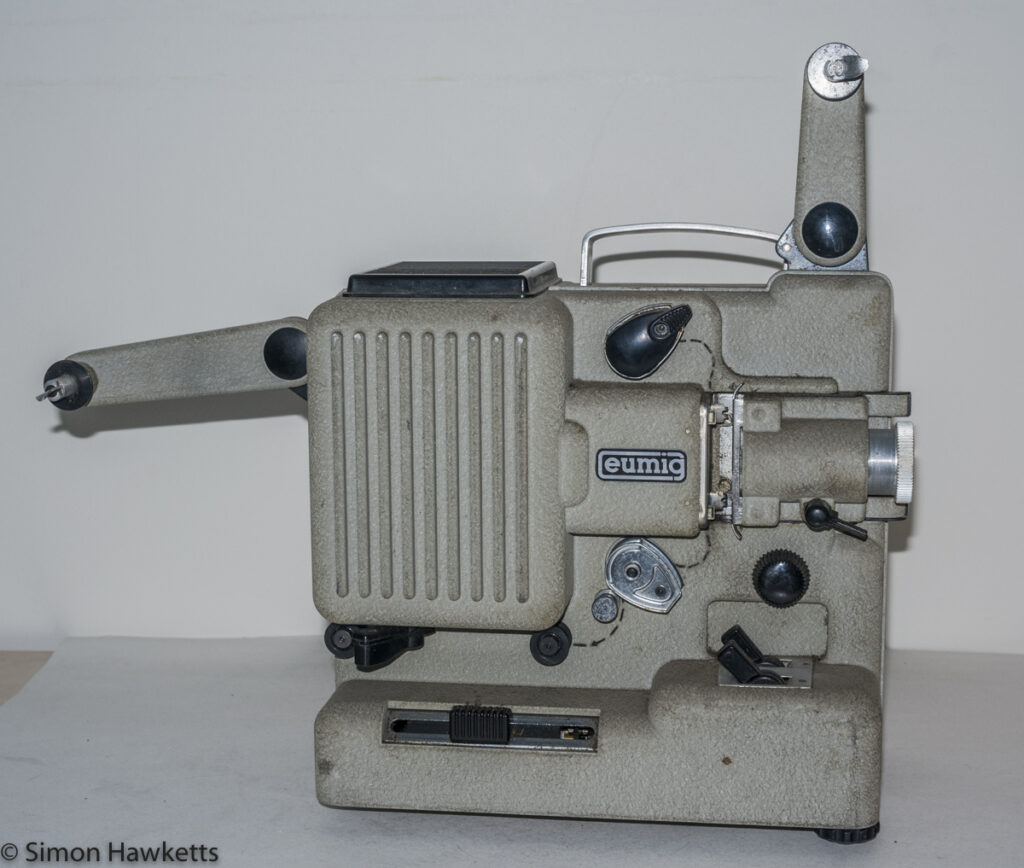
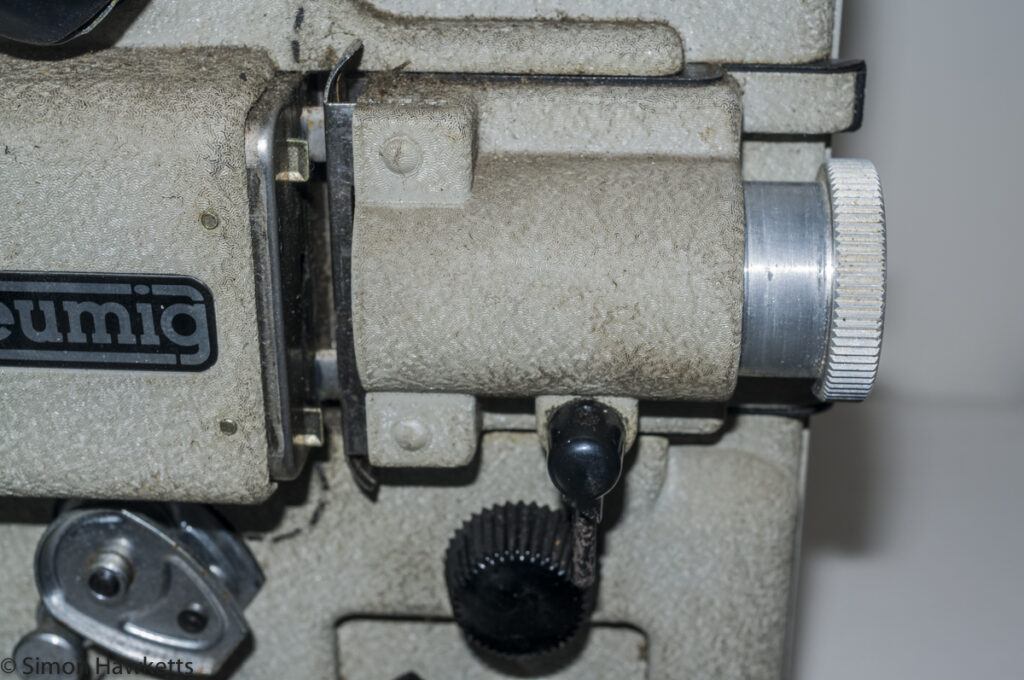
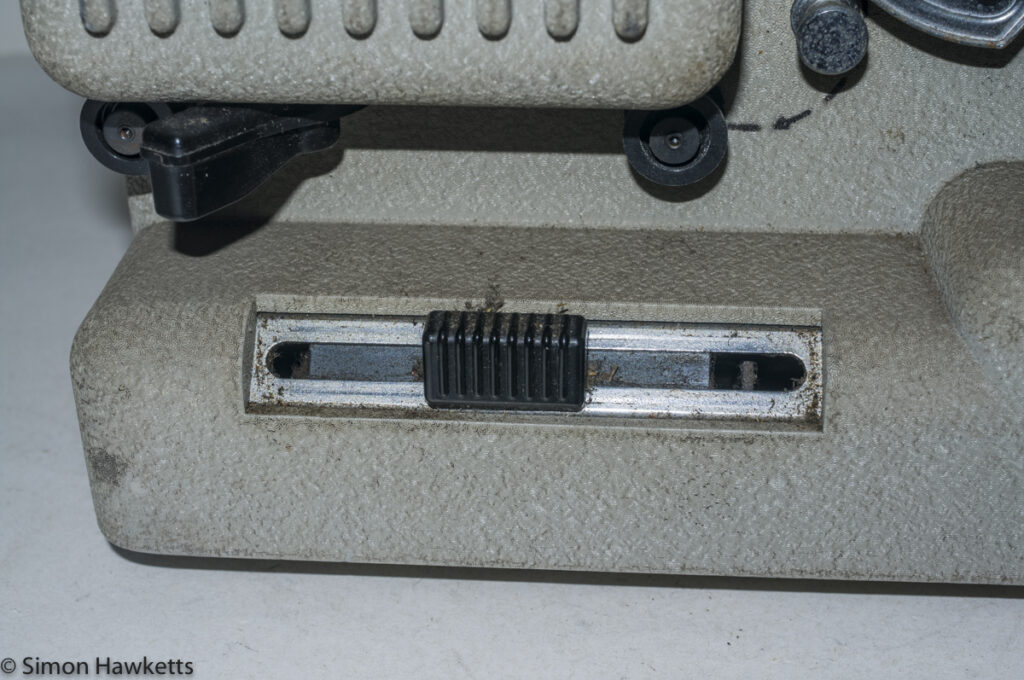
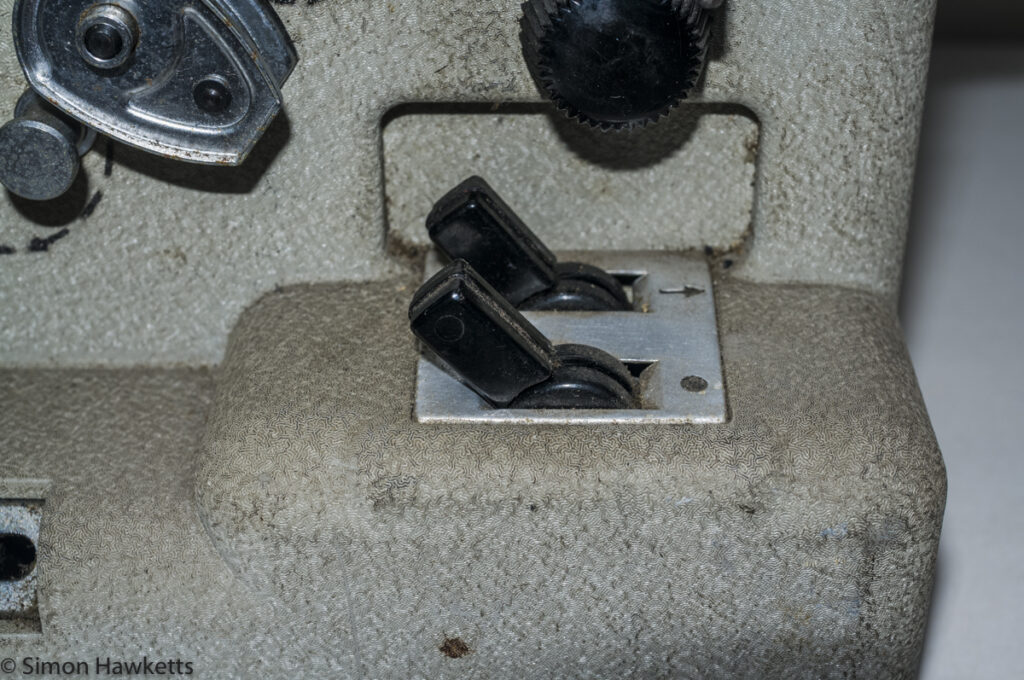
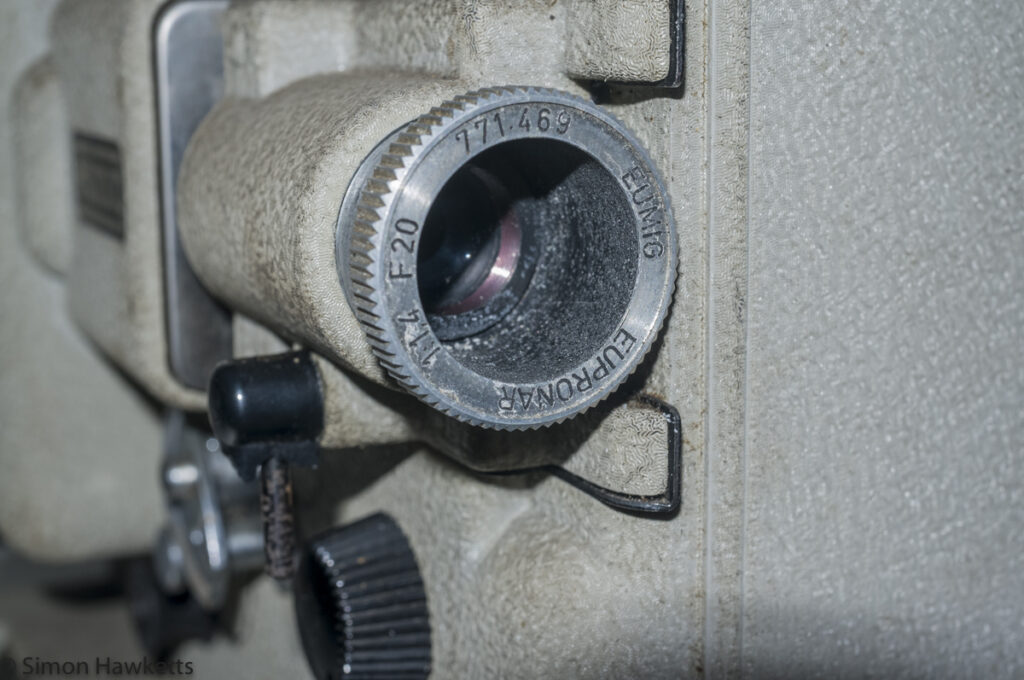
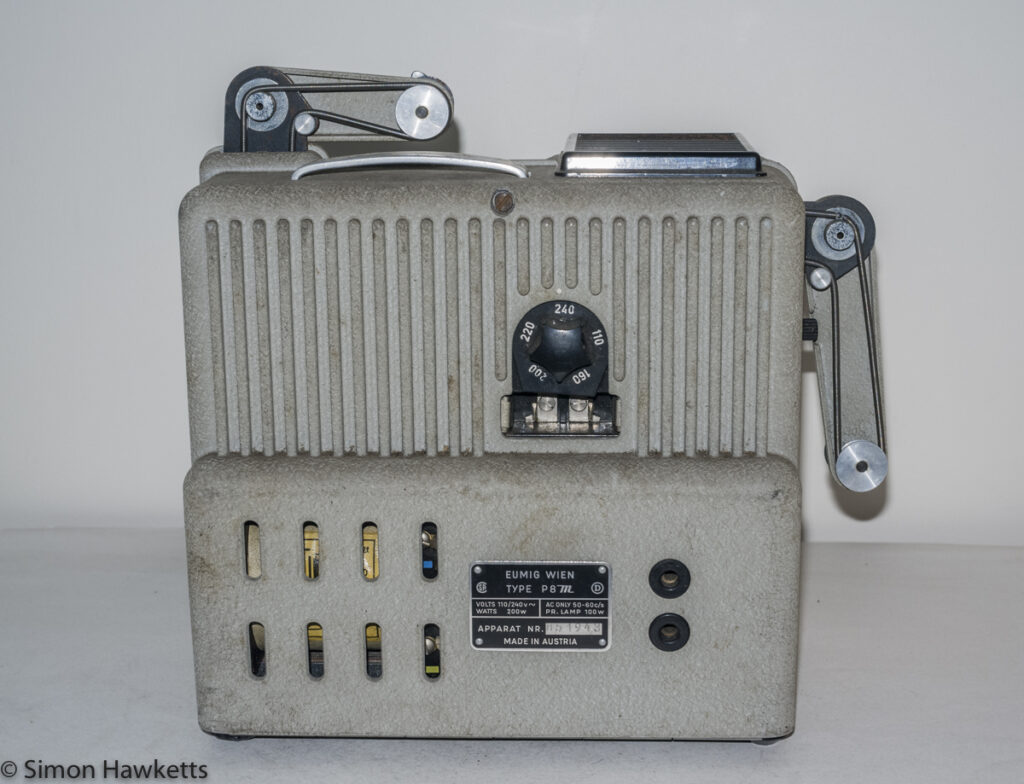
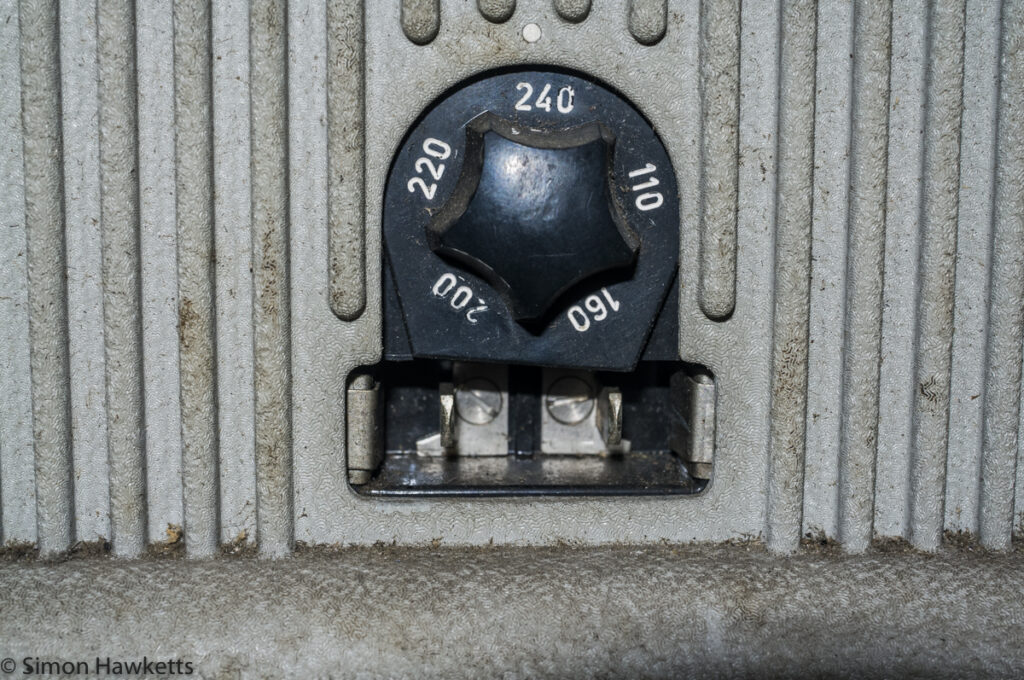

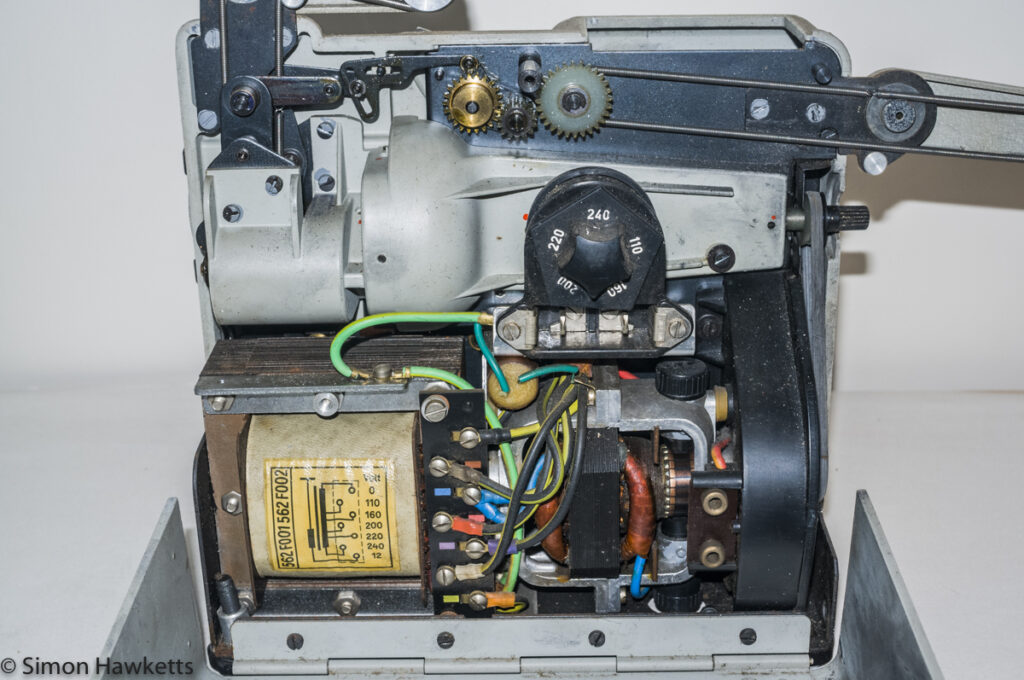
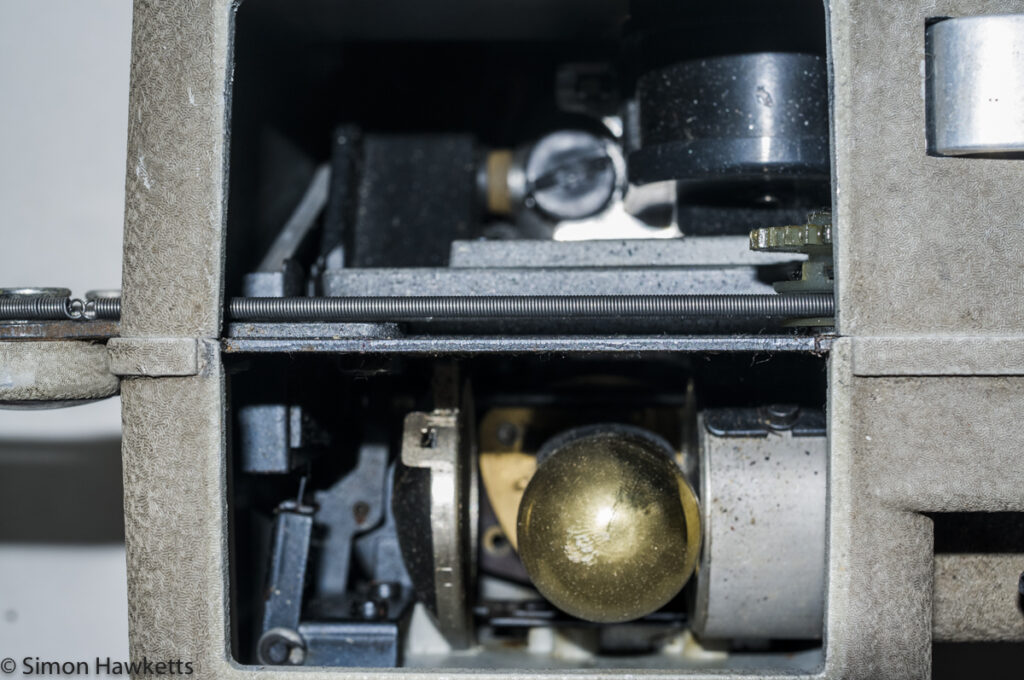
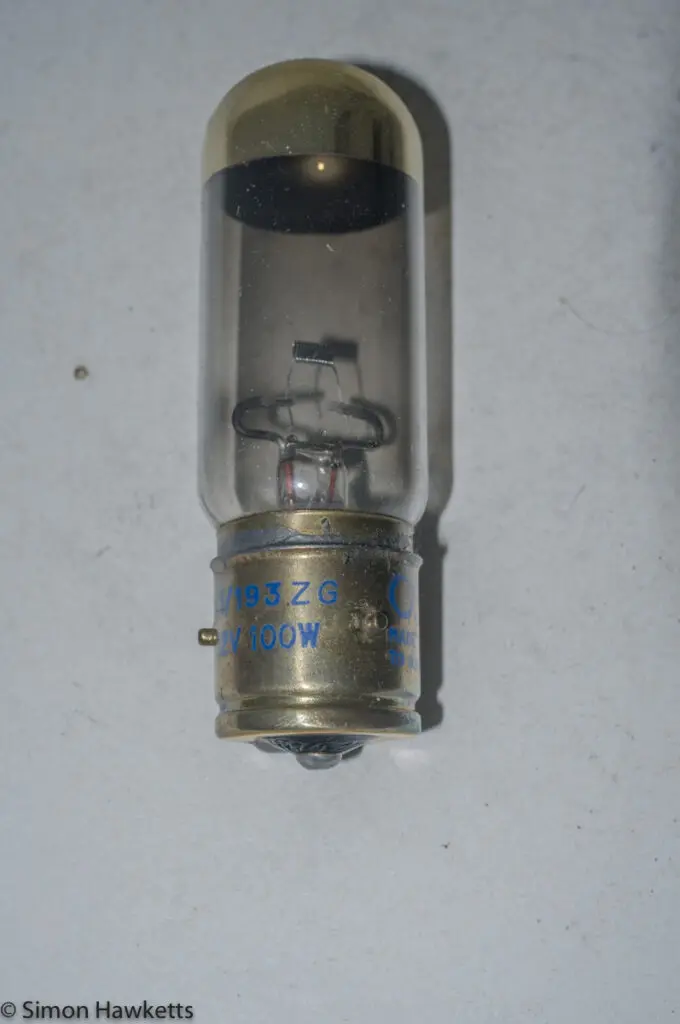
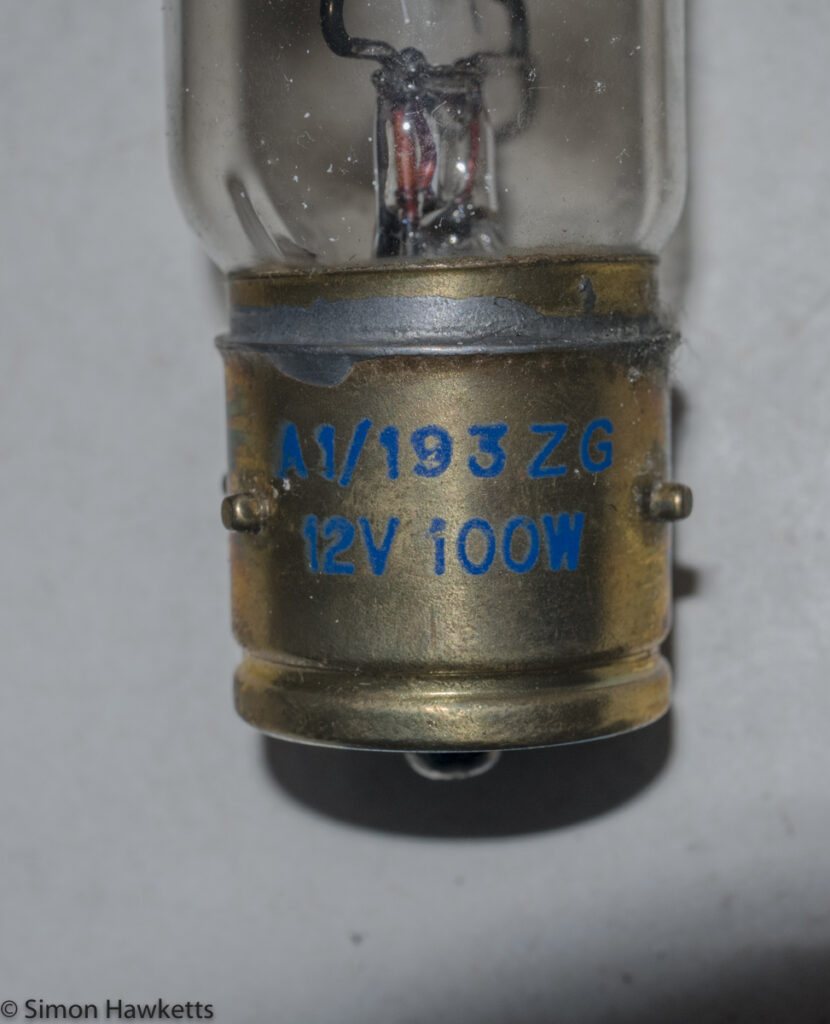
My Eumig P8m 8 mm Silent projector
I purchased my copy of the Eumig P8m, 8 mm silent projector as an impulse buy from eBay. Although I have a Chinon C-300 projector which is a dual format unit, I wanted to get a more traditional unit to play some of the variety of standard 8 home movies I’ve acquired over the last few months.
As I said, this was an impulse buy, and it was driven by the price of the unit. I was browsing through ‘vintage 8 mm projectors’ on eBay and I found this unit listed for £9.99 with free postage. Since projectors are heavy units, the postage is normally around £8, so in effect the projector was only a couple of quid. It was sold ‘as seen’ so probably didn’t work, but since it would be a useful unit for spares if nothing else, I bought it.
When it arrived, packaged in a flimsy cardboard box with a plastic sheeting taped over it, I was surprised at how small the unit is. I don’t know why I expected it to be big, but for some reason I did.
On closer inspection, the unit is in reasonable cosmetic condition, with just a few signs of it’s 60 odd year history. The cover on the lamp housing is chipped, although fortunately it is hardly noticeable, and the plastic cover to the lower film guide is missing. Also, the arm which moves the lens unit for threading and rewinding the film has lost its plastic casing.
The P8m I bought had no accessories or mains lead, but fortunately the mains lead the P8 used was also used on a number of other Eumig projectors and I happen to have one.
Before I tried applying power, I gave the projector a visual inspection. Removing the lamp and checking it suggested the filament was still in place, so I thought it should work, and I also found, if I turned the knob at the back of the machine under the take-up arm, the spool spindles moved and the sprocketed drive wheels turned. This gave me hope that the unit would be OK, but when I applied power (through an earth leakage breaker), I found that although the motor turns, the lamp doesn’t light. There is also another fault I found right away, which is that the on/off switch is set to permanently on irrespective of how I switch it.
Of course, the unit is grimy and needs a good clean, but since there are problems with the unit, I’m probably going to use it as a source of spares to fix another P8. As well as the faults, another factor which helped me decide this is the price of a replacement lamp. On later models, such as the P8 Automatic Nuvo, the lamp is a small modern unit which can be bought for about £5, whereas a replacement for the P8m is about £40.
Eumig P8m Description
The Eumig P8 was made in a variety of different models as Eumig added features and improved the design. The model featured here, the Eumig P8m, was released after the original P8 model, but I’ll admit I’m not sure of the differences between the two.
I found a vintage advert for the P8 which listed the price in 1958 (which was around the time my version was made) at £32. Since the average weekly wage in the UK was about £12 in 1958, the projector represents a serious investment and was, therefore, a purchase for someone who took their cine hobby passionately.
The P8 is a compact unit which I believe was originally supplied in a case where the lid of the case formed a base for the projector and the body of the case fitted over the body of the projector. In this way, the projector was sitting on a stable base once the case was removed.
The Eumig P8m in Use
Although my Eumig P8m isn’t in fully working order, it is possible to work out how the projector is used.
First, the projection arms, which hold the film and take up spool and are foldable, are moved into their working position. Each arm has a sprung drive belt on the back which transmits the motion to the spools and after the arms are unfolded, these drive belts should be checked to make sure they properly sit in the wheel behind the reel holders.
Once the arms are folded out, the full reel of film is fitted to the top arm and an empty take-up reel is fitted to the back arm. Then the film is threaded manually from the full reel, around the various sprocketed wheels, following the path marked on the body of the projector with a dotted line and onto the take-up reel at the back. Although this model is manually threaded, later models of the P8 had an auto feed system, although it was not reputed to be very good.
Before power is applied, the On/Off switch under the lens needs to be set to the off position, and the single frame/continuous switch, under the lamp housing, needs to be set to the continuous position (which is towards the front of the projector). It also makes sense to set the forward/reverse switch to the forward position (again, forward) and the speed regulator to about mid-way.
When the power is turned on, the image will be projected and the lens is turned to set the focus. The lens on the P8m is not a zoom lens – that again is an enhancement which later models had. If the image is not correctly centred, the framing knob, which is just above the on/off switch, is adjusted to correct that problem.
A nice feature of the projector is a two pin socket on the back of the unit which can be used to supply a small table lamp. This socket has power applied when the projector is turned off and then turns off when the projector is started. This makes a useful light to thread the projector.
When the film show is complete, the film is unthreaded from the film gate and sprocket wheels and instead just fed from the take-up spool directly to the other reel and then the lever under the lens is swung to its fully forward position and the film is power rewound to the original reel.
A Word of caution
I just thought I would add to this article a word of warning about running the Eumig P8m with the back cover down. When this unit was made there were not so many rules and regulations regarding safety and many of the parts exposed when the back door is open are live, including, oddly the shaft of the motor which drives the mechanism! I was very surprised to find this, but the drive belt is non-conductive, and I guess at the time, since the unit is designed to be run with the cover screwed shut it wasn’t considered a hazard.
Discover more from Everything Vintage
Subscribe to get the latest posts sent to your email.

